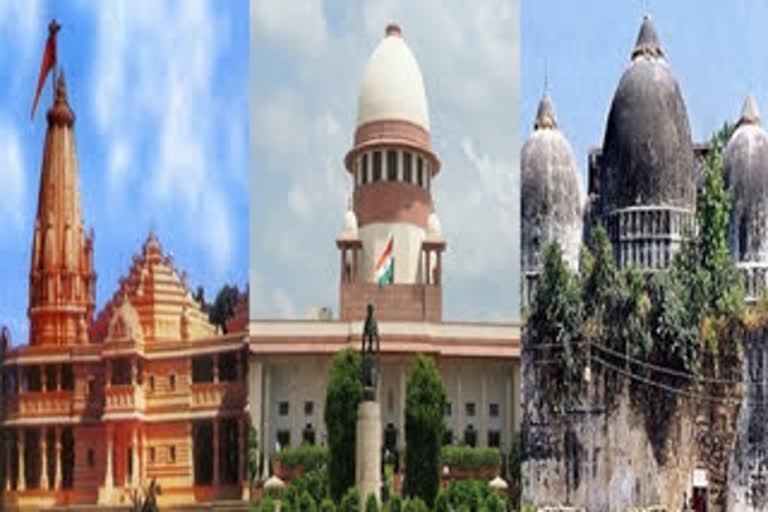New Delhi: The Babri Masjid was damaged in 1934, saw trespass committed in 1949 and was finally brought down in 1992 for the sake of protecting “Hindu rights”, Muslim parties said on Monday as they began their arguments in the Supreme Court in the Ayodhya title dispute.
Senior advocate Rajeev Dhavan, appearing for the Muslim parties, focussed on contesting the “common thread” running across the Hindus parties’ arguments, contending that one was after 1950, their right became crystallised under the Constitution’s Article 13, and disputed it by relying on Constituent Assembly debates on the preamble and secularism embedded in the Constitution.
“Suggestions to have the preamble referring to God almighty were shot down,” he said.
Dhavan told the Constitution bench headed by Chief Justice Ranjan Gogoi that a claim was made that the right is in realm of public law, but when asked what about Muslim law, the usual reply is that it is only Hindu law.
“It was said they (Muslims) were invaders and don’t recognise their law after 1950, recognise only Hindu law,” he said, adding that India inherited law from the British and decided to continue with their law.
At the beginning of the arguments, Dhavan apologised to the bench for his comments in the media and to senior advocate P.N. Mishra. “It is universally recognised that I can be irritating,” he said.
During the course of the arguments, he referred that as the title suit is civil in nature, then there is no room for historical facts and claims, and only admissible evidence on record is applicable to the case.
Contesting the arguments of lawyers for both the Nirmohi Akhara and Ram Lalla Virajman, he said: “There were no idols in the Vedic period. Parikrama is a form of worship and it cannot be treated as a form of evidence. I don’t know on the map, submitted by Hindus parties to the court, where does it end?”
He also raised fundamental questions related to the deity and the idol inside the makeshift temple, and the relevance of the inner and outer courtyard in the disputed site.
Dhavan also claimed that the mosque was constructed on non-occupied vacant land. “Do you want me to start from 1858 or do you want me to go back to 1528? ….If your Lordships want me to go back to 1528, I can show document after document to prove that a mosque existed there,” he said.
In sharp criticism on one of the judges of the Allahabad High Court behind the 2010 verdict, dividing the land between three parties, he said that the judge decided to give his judgment on the basis of conjectures and preponderance of probabilities.
“The entire secular structure of our Constitution will disappear, if we attempt a balancing act between apples and oranges,” Dhavan argued, apparently attempting to equate historical submissions by Hindu parties as fiction.
Later, he drew the court’s attention on the images of the peacock and lotus found inside the structure, and argued if we were to believe just these images, the idea that there was a massive structure before the mosque is debatable.
At this, one of the judges on the Constitution bench told Dhavan that he had also relied on historical submission. “But you have also relied on historical submissions. It is something both sides have relied on,” said Justice D.Y. Chandrachud.
Dhavan also submitted the Muslim law relating to trusts differs fundamentally from the English law. “Once it is declared that a particular property is waqf or it is dedicated to waqf, then ownership is transferred to Almighty,” he submitted.
He also referred to certain submissions by K Parasaran, aged 93, who represented Ram Lalla Virajman, and claimed he respected him a lot. “He is, as Your Lordships say, Bhishma Pitamah, (then) it is for Your Lordships to decide at the end whether he was on the right side or not,” said Dhavan.
The arguments will continue on Tuesday.
Also Read: Hoardings backing Scindia as MP Congress chief seen in Gwalior



